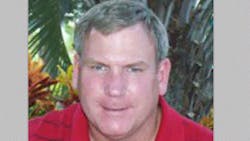Maintenance Best Practices -- Forward to the Basics with Grease Guns
It may surprise you to learn that a grease gun is a deadly weapon capable of killing your equipment and in turn, the much-hoped-for reliability. Grease guns can generate significant pressure and if improperly used, ultimately blow out the seals designed to protect the bearings from external contaminants.
Overfilling the bearing cavities can create the same problem. When that occurs, the grease is forced outside the seals (path of least resistance) as the equipment heats up where it is exposed to contaminants and moisture. When the equipment cools, the contaminated grease is drawn back into those same cavities. Overfilling the cavities also creates additional heat.
So how can you overcome these problems? First, you need to understand the amount of grease required to properly lubricate the equipment. One of the best places to start is with the OEM or bearing manufacturer. Many manufacturers will provide you with the proper grease amounts to be applied at specific frequencies on electronic media like CD-ROMs.
Next, understand how much grease each of your grease guns provides per "shot" or pump. Samples from 30 different grease guns produced a range of 0.54 to 2.9 grams per pump. Pull samples to "calibrate" your grease guns and mark the amount of grease dispensed per pump on the gun itself.
To prevent human error in applying the wrong lubricant, color code your grease guns and grease fittings. A number of companies sell clear grease gun barrels or colored sleeves to go over the barrels. For the fittings themselves, use matching paint around or colored plastic rings under the fittings.
As part of your housekeeping process, wipe the gun tip and fitting before and after application. A cap on the fitting can also help prevent contamination.
Using these tips will take your asset management strategy to a more precise and effective level.
Jeff Shiver, CMRP, CPMM, is a managing principal for People and Processes Inc. where he has educated and assisted hundreds of people and numerous organizations in implementing the best practices for maintenance and operations. Shiver has worked with clients in educational, manufacturing, municipal, and facilities environments to improve their practices. Certified in the maintenance best practices and as an RCM2 practitioner, he is a frequent presenter at maintenance conferences and is published in various trade media outlets via articles and blogs. As such, Shiver leads many of People and Processes' core training classes such as maintenance planning and scheduling, maintenance and reliability for managers, supervision, and reliability centered maintenance (RCM2). He can be reached at [email protected].
